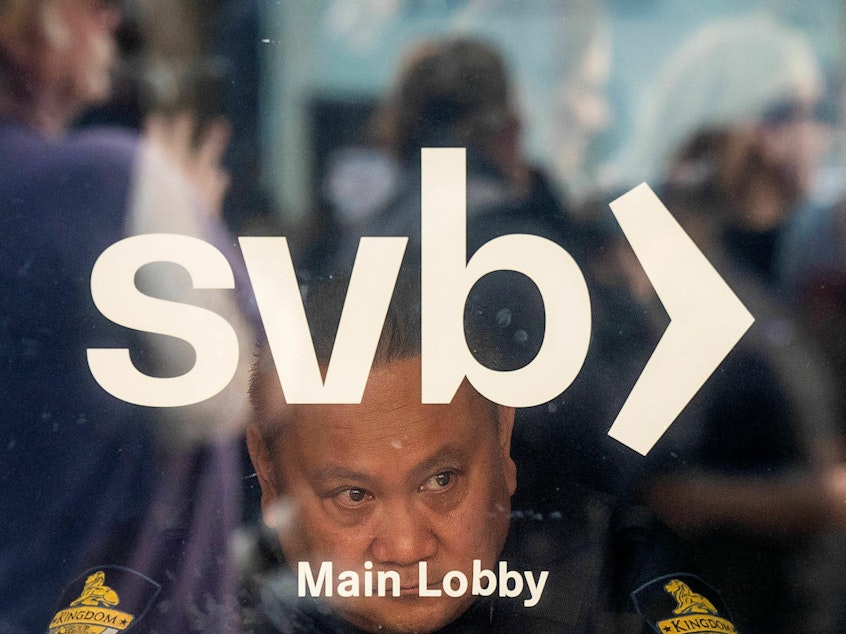SVB collapse could have ripple effects on minority-owned banks

The Senate Banking Committee is probing federal regulators this week to understand what led to the largest U.S. banking failure since the 2008 financial crisis and the second-largest ever.
The data released last week from the federal reserve showed that in the week following the collapse of SVB, small banks lost a total of at least $108 billion.
Small banks and community-owned financial institutions often work with people of color who are unable to get funding from America's largest banks. Some leaders of these smaller institutions are worried about the future of their businesses, as customers transfer their funds to presumably safer and larger banks. They are also asking the government to step in and provide solutions, and they are urging their customers to continue trusting in their missions and businesses.
Carlos Naudon is president and CEO of Ponce Bank in Bronx, New York, a minority depository institution serving communities of color; most of its customers are Latinx. He told NPR that the collapse of Silicon Valley Bank increased nervousness among its depositors and increased "distrust that the government is telling the truth."
When asked what his biggest concerns are, Naudon said: "We are hampered by the lack of funding for vehicles to support the economic growth of our communities."
There are 145 FDIC-recognized minority banks that range in assets from $15 million to $62 billion.
The average asset size is $400 million, but many of their clients often cannot get financial support from America's large banks. So, they turn to their community banks.
The history of minority-owned banks and why they matter
Nicole Elam, who manages the National Bankers Association (NBA), told Morning Edition that many people of color have been relying relied on minority-owned banks for years.
"If you are black, brown or immigrant, you are more likely to have access to financial services," Elam said. "You are more likely to get approved for a mortgage, more likely to get approved for a small business loan if you have a minority bank branch sitting in your community."
The NBA advocates for its clients to have a voice in national banking conversation in an effort to close the racial wealth gap. But with looming financial instability in the banking sector, these community owned banks are vulnerable.
Elam said whenever there is an economic downturn, minority owned banks are hit hard and are often forced to close. There has been a steep decline in the number of Black owned banks over the last two decades. From 1888 to 1934, 134 Black banks were created to serve Black Americans. There are currently 20 Black owned banks in the nation. Elam says that in the post-George Floyd environment, many have realized that these banks are key to closing the wealth gap.
"Over the last three years, you have seen the public, private and philanthropic sector infuse huge amounts of capital into these banks," Elam said.
Naudon shares a similar view. He says he saw some deposit inflows occur during the last period of financial instability because larger depositors know when they add their funds to Ponce Bank that they are helping the community.
Ushir Shah, co-founder of Known Holdings, said his goal is to increase capital allocation to people of color. He says the biggest problem in the banking sector right now is "fear."
"A big part of banking is confidence," Ushir said.
Known Holdings is a financial services platform led by Black, Latinx and Asian people.
The solution from their perspectives
At the Senate Banking Committee hearing this week lawmakers want to know if the U.S. can maintain a healthy banking system. The same questions resonate with small bank managers who are concerned about the impact on their banks.
Elam is hoping that the government will reinstate full deposit insurance coverage for depositors for the next one or two years. Shah says the government must make a statement or policy to ensure confidence in the banking sector and ensure that other banks do not collapse.
Naudan wants the government to restart the program to remove treasury deposits from the large banks and into minority depository institutions.
"We are systemically critical for the communities of color," Naudon said. "If we disappear, nobody will provide banking services for them." [Copyright 2023 NPR]



